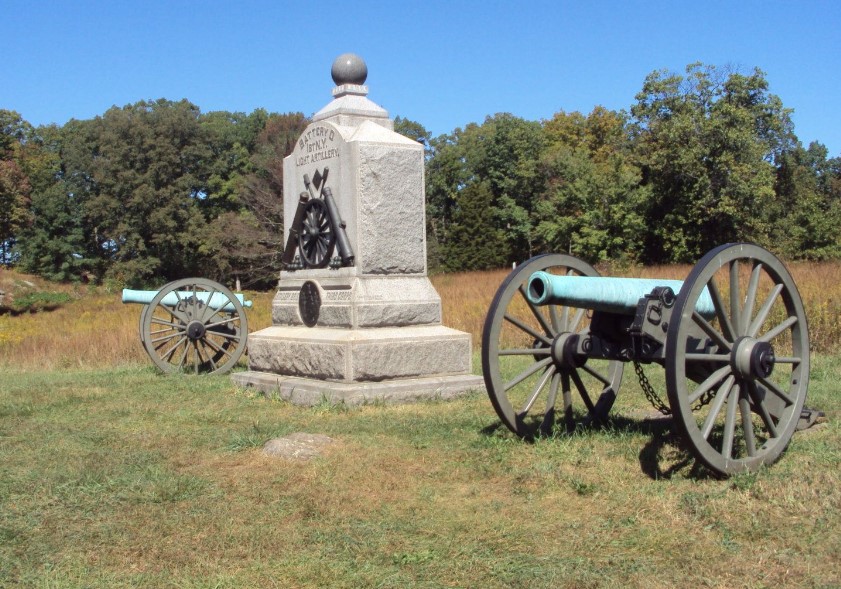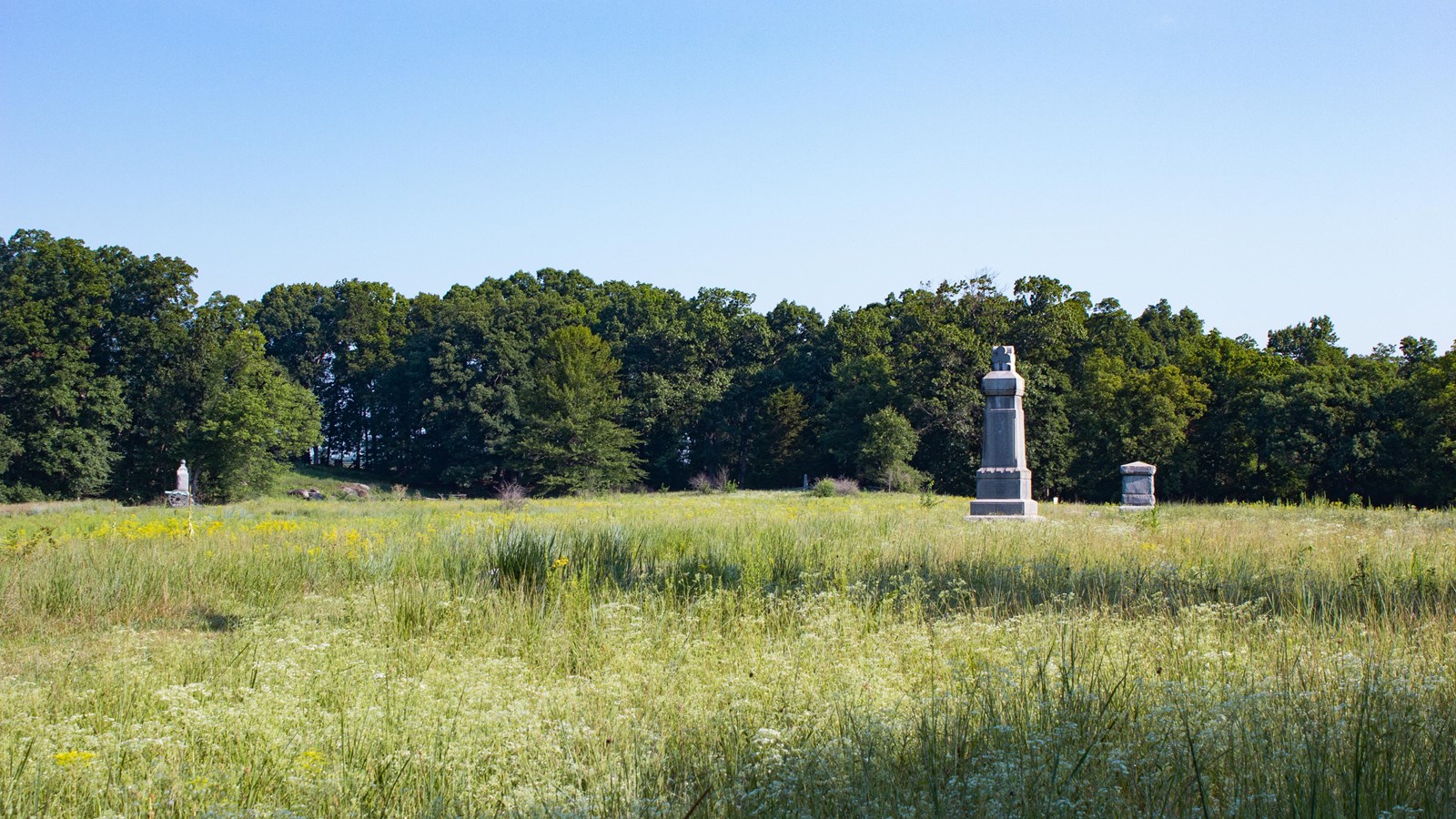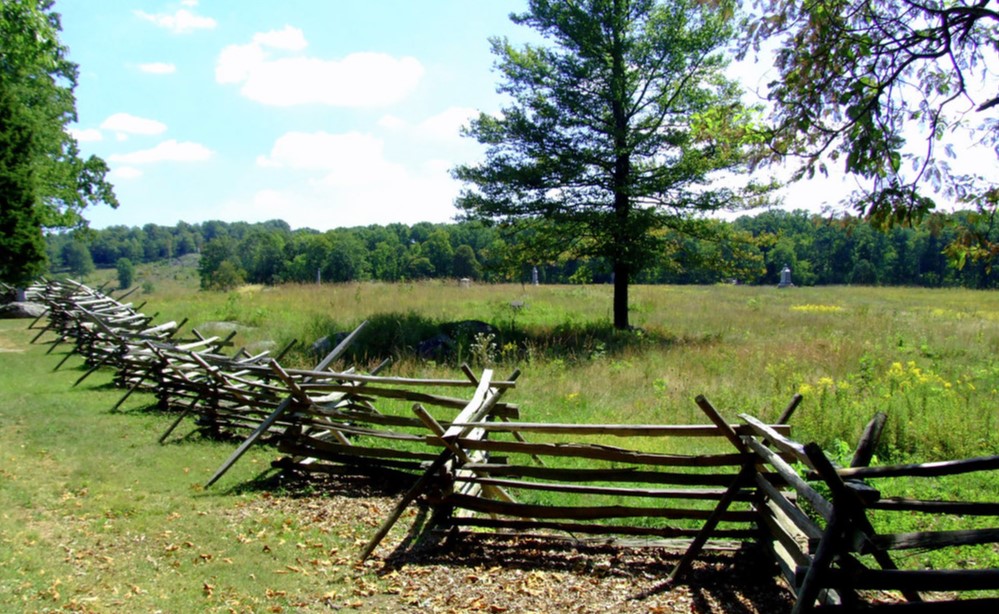
Battlefield Highlights: The Wheatfield
June 29, 2023The second day of the Battle of Gettysburg was the bloodiest day of the battle. Throughout that day, fighting at numerous locations around the battlefield involved 100,000 combatants, 20,000 of whom would end the day either killed, wounded, captured, or missing, making July 2nd, 1863, a truly dire day in the history of our nation. And centered amidst the near-constant ebb and flow of the ongoing carnage was a small patch of land… 19 acres of wheat owned by local farmer George Rose, that history would come to know as “The Wheatfield.”
Throughout the afternoon of July 2nd, an extended series of charges and countercharges left this field and the nearby woods dotted with the bodies of over 4,000 dead and wounded soldiers from both sides. The thousands of troops who fought in this area that day would later compare the action there to a whirlpool of advancing and retreating bands of men that streamed over the landscape and flowed like water across the trampled wheat, an area that changed hands six times in one afternoon. The woods that border the field were not as dense in 1863 as they are today, but they provided some cover for the Confederates as they maneuvered around Union positions here.
Battle is Joined
The fighting here began in earnest around 4:30 PM when a Georgia Brigade commanded by Brigadier General George Anderson swept through the woods to the south and clashed with Brigadier General Régis de Trobriand’s Union regiments, who were positioned behind a stone wall on the southern end of the field. Although outnumbered, de Trobriand’s men held the Confederates at bay for almost an hour before de Trobriand’s 17th Maine Infantry had expended all ammunition and were forced to withdraw across the Wheatfield. Anderson’s men triumphantly pursued but General David Birney suddenly ordered an about-face and led the retreating Union troops in a desperate bayonet charge that halted the pursuing Confederates in their tracks. Anderson’s troops swiftly recovered, however, and renewed their pursuit, but Union reinforcements had arrived on the scene and the battle raged on.
As the fighting continued in the southern end of the Wheatfield, Union troops filtered into the woods to the east and west to clash with Confederates moving in from the direction of the Rose Farm. General Kershaw’s Brigade of South Carolina attacked Union troops on a small rocky knoll that borders the west side of the field for a full hour until the Union troops there withdrew.
The famous Irish Brigade arrived, crossing the Wheatfield to counter the Confederates and drive them back off the knoll. Kershaw counter-attacked, re-enforced with a Georgia Brigade under Brigadier General Paul Semmes. Semmes led two regiments to fill a gap on Kershaw’s right in the lower part of the Wheatfield, only to be checked by a fresh Union brigade under Colonel John Brooke. Brooke’s regiments drove Semmes’ men back to the Rose Farm orchards south of the house, where the two forces fought back and forth for control.

Confederate forces continued to pressure Union positions, forcing a step-by-step withdrawal from the Wheatfield and surrounding woods. Fighting became intense and included hand-to-hand combat. Colonel Harrison Jeffords of the 4th Michigan Infantry was bayoneted by a Confederate soldier while rushing to save his regiment’s flag from capture. Eventually, Brigadier General Wofford’s brigade swept across the field, leaving a somber silence broken only by the groans of the thousands of wounded and dying soldiers. George Rose’s Wheatfield had earned its reputation as one of the bloodiest locations on the battlefield.
The Botched Withdrawal
By 5:30 p.m., Kershaw’s regiments approached the Rose farmhouse while the Union forces at Stony Hill received reinforcements from two new brigades, one commanded by Colonel Jacob B. Sweitzer. Despite Kershaw’s continued attacks, the Union regiment valiantly held its ground until Barnes decided (controversially) to withdraw his understrength division to a new position near the Wheatfield Road, about 300 yards to the north. The rest of the 17th Maine was forced to follow suit, which allowed the Confederates the opening they needed to seize Stony Hill and advance back into the Wheatfield.
Arriving around 6 p.m., Caldwell’s division deployed three brigades, under Colonels Samuel K. Zook, Patrick Kelly (the Irish Brigade), and Edward E. Cross, with Col. John R. Brooke’s brigade held in reserve. Zook and Kelly successfully drove the Confederates from Stony Hill, while Cross cleared the Wheatfield, pushing Kershaw’s men back to the edge of Rose Woods. As Cross’s troops ran out of ammunition, Caldwell ordered Brooke’s brigade to relieve them. However, by this time, the Union position in the nearby Peach Orchard had collapsed, allowing a Confederate assault to proceed down the Wheatfield Road, seizing Stony Hill and flanking the Union forces within the Wheatfield.
Brooke’s brigade in Rose Woods now retreated, but Sweitzer’s brigade was deployed to impede the Confederate assault, engaging in brutal hand-to-hand combat. Once again, the ownership of the Wheatfield changed hands.
Reinforcements Under Fire
As Union reinforcement advanced across the Valley of Death, they faced heavy fire from Confederate sharpshooters in Devil’s Den, allowing Confederate troops to overwhelm Stony Hill and Rose Woods, forcing two newly arrived Union brigades back to Little Round Top. Out of their complement of 2,613 soldiers, those two brigades suffered 829 casualties.
The final Confederate assault through the Wheatfield extended into the Valley of Death around 7:30 p.m. The brigades of Anderson, Semmes, and Kershaw, exhausted from hours of combat in the sweltering heat, advanced eastward with their units disorganized. Wofford’s brigade followed, moving along the Wheatfield Road. As they reached the northern slope of Little Round Top, they faced a counterattack from the 3rd Division (the Pennsylvania Reserves) of the V Corps, led by Brigadier General Samuel W. Crawford. Colonel William McCandless’s brigade, including a company from the Gettysburg area, spearheaded the attack and drove the weary Confederates back beyond the Wheatfield to Stony Hill. Recognizing that his troops were overly exposed, Crawford ordered the brigade to retreat to the eastern edge of the Wheatfield, and further operations in the Wheatfield were ended.
The Aftermath
The once chaotic and blood-soaked Wheatfield fell into an eerie calm for the remainder of the battle. However, the toll it took on the soldiers who fiercely battled for its possession was devastating. The Confederates engaged six brigades while the Federal forces fielded 13 somewhat smaller brigades. Out of the 20,444 men involved in the conflict, approximately 30% suffered casualties. Some wounded soldiers managed to crawl to Plum Run but were unable to cross it, staining the river with their blood. Similar to the Cornfield at Antietam, this small stretch of farmland holds a place of profound significance in the annals of warfare, forever etched in the memories of the veterans who fought there.
Visiting the Site
When visiting the renowned Gettysburg landmark known as The Wheatfield, you have the opportunity to fully engage with the captivating past and personally grasp the importance of this crucial segment of the battlefield. It serves as both a tribute to the courageous individuals who fought and perished in its vicinity and a powerful link to this profoundly significant chapter in American history. Paying a visit to this significant battlefield monument might ignite a desire within you to further uncover the extraordinary narrative of the Battle of Gettysburg, as the valiant actions of the soldiers who fought and fell there still resonate, echoing down through history to the present day.
Location of the Wheatfield
The Wheatfield lies west of Roundtop and North of Rose Woods, bordered by present-day Wheatfield Road and Sickles Avenue.
Plan your next excursion with us! Our bus tours of the historic Gettysburg Battlefield are active and ready to show you the sites of the historical battleground. Reservations can be made by calling our toll-free number at 877-680-8687. You can also purchase bus tour tickets online. Tours depart from the Gettysburg Tour Center located at 777 Baltimore St., Suite 100.
